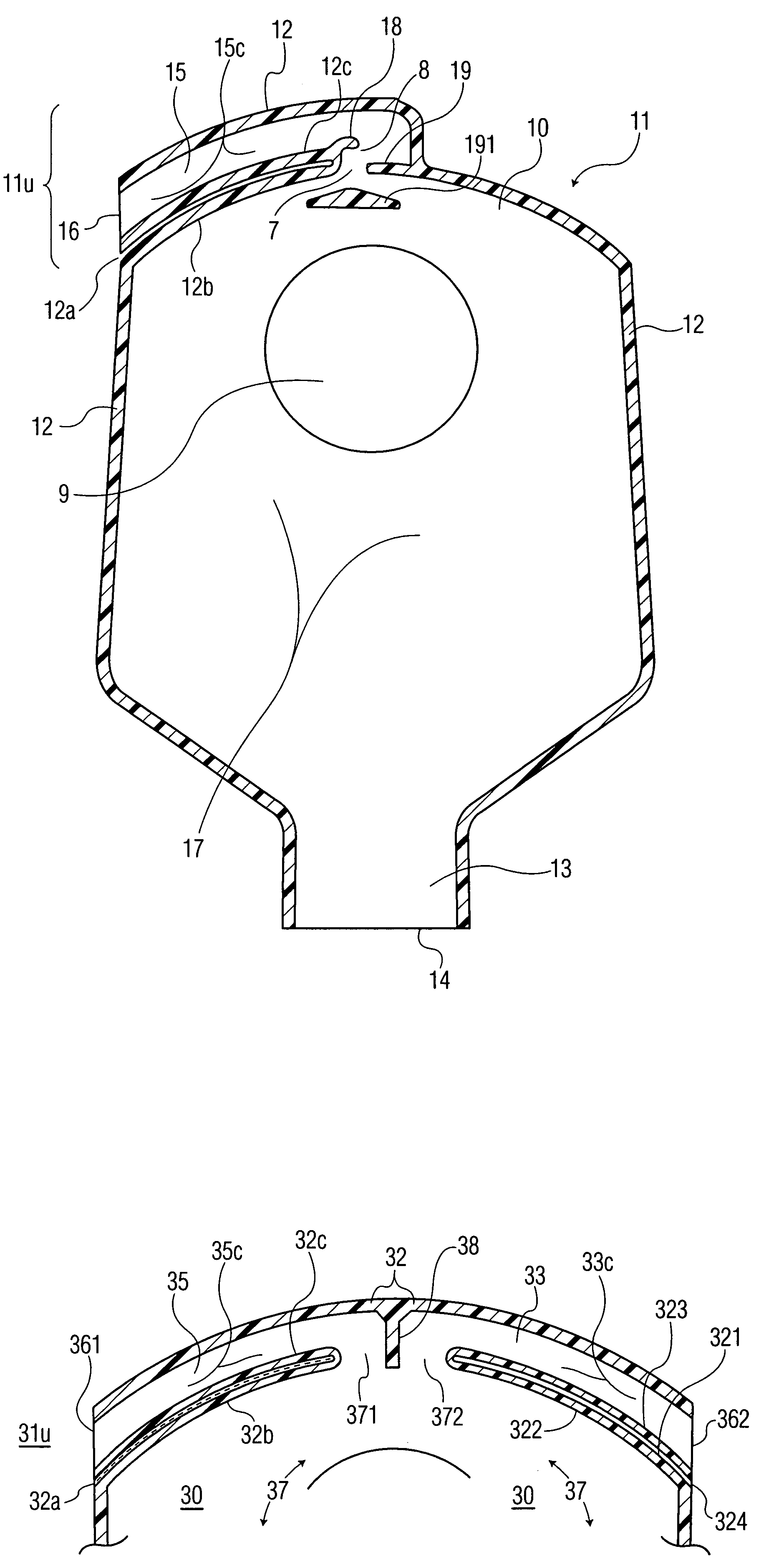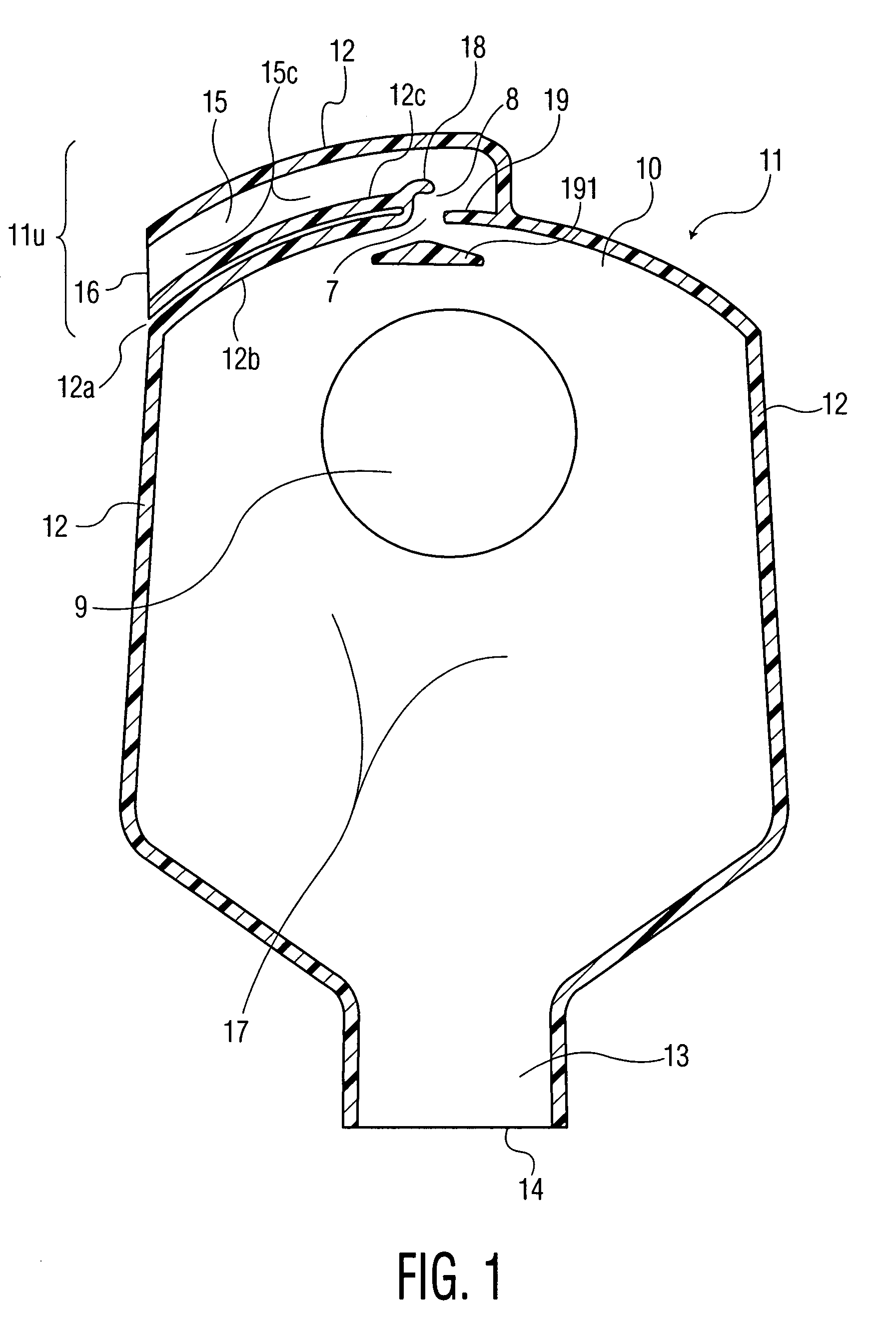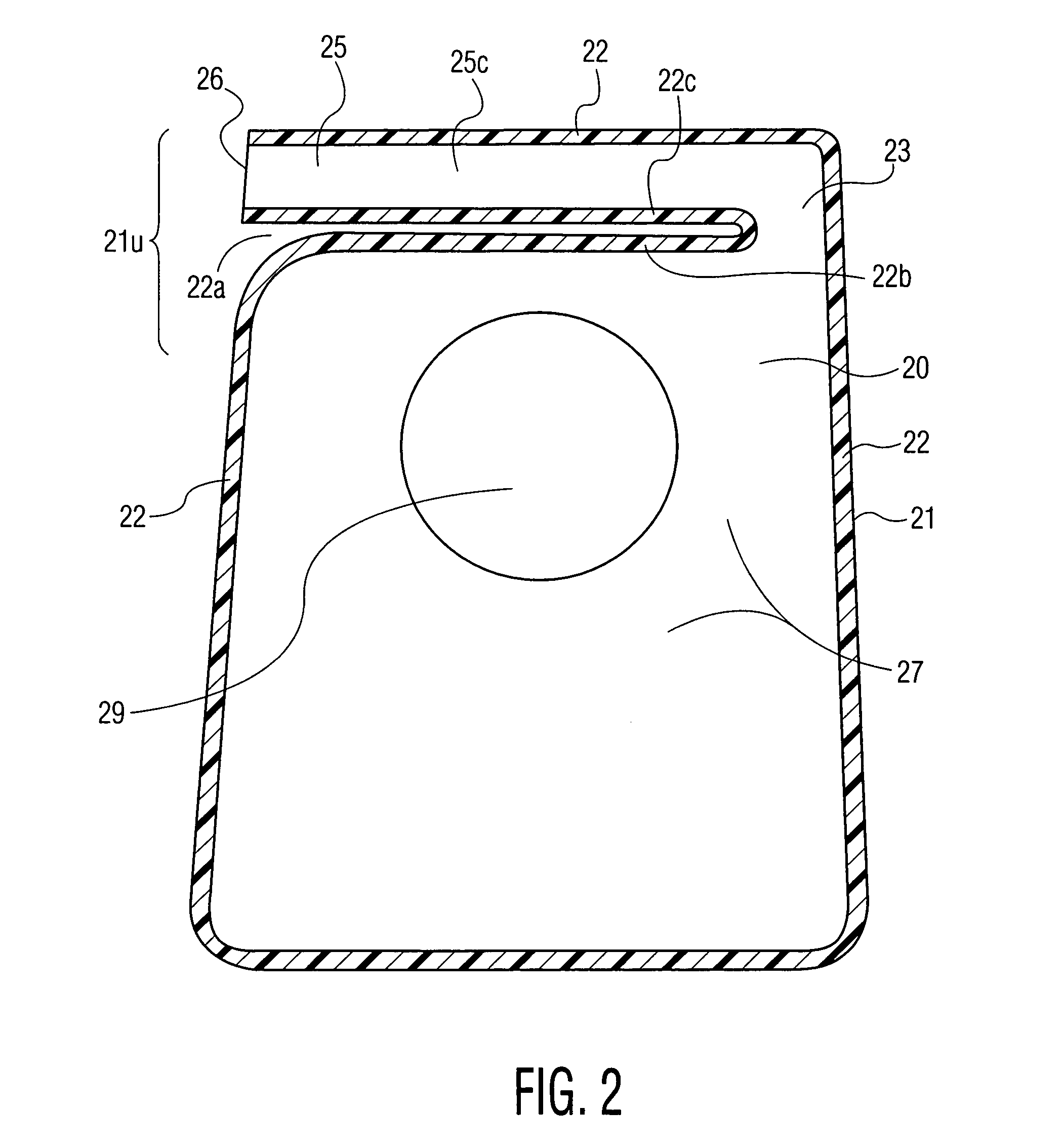Ostomy tools, and systems and processes for their use
a technology of tools and tools, applied in the field of systems, processes and tools for human body management, can solve the problems of difficult control of flatus gasses, and persistent problems, and achieve the effects of reducing personal risks, reducing pain, and reducing pain
- Summary
- Abstract
- Description
- Claims
- Application Information
AI Technical Summary
Benefits of technology
Problems solved by technology
Method used
Image
Examples
Embodiment Construction
[0041]FIG. 1 depicts, in cutaway drainable ostomy bag 11 revealing interior surface of the body-side wall 10 of ostomy bag 11 having an arched top. As indicated above, the body-side (or “rear”) wall is the wall of the bag that is normally closest to the skin of the ostomist wearing the bag. The exterior of rear wall 10, therefore, is desirably (and typically) covered with a soft textured more skin friendly plastic. Ostomy bag 11 rear wall 10 has a perimeter that is sealed to a mating frontal-side wall and to a partially mating comfort layer on its exterior. The seal is indicated by hatched lines: seal 12, seal 12b, and seal 12c. The entire perimeter of ostomy bag 11 is sealed except for two ports: (1) waste discharge port 14 and (2) versatile tube multipurpose port 16. Port 14 is the opening at the end of waste discharge channel 13. During waste collection in main chamber 17 of ostomy bag 11, (the chamber receiving gaseous, solid and liquid waste from the stoma) channel 13 is closed...
PUM
 Login to View More
Login to View More Abstract
Description
Claims
Application Information
 Login to View More
Login to View More - R&D
- Intellectual Property
- Life Sciences
- Materials
- Tech Scout
- Unparalleled Data Quality
- Higher Quality Content
- 60% Fewer Hallucinations
Browse by: Latest US Patents, China's latest patents, Technical Efficacy Thesaurus, Application Domain, Technology Topic, Popular Technical Reports.
© 2025 PatSnap. All rights reserved.Legal|Privacy policy|Modern Slavery Act Transparency Statement|Sitemap|About US| Contact US: help@patsnap.com



